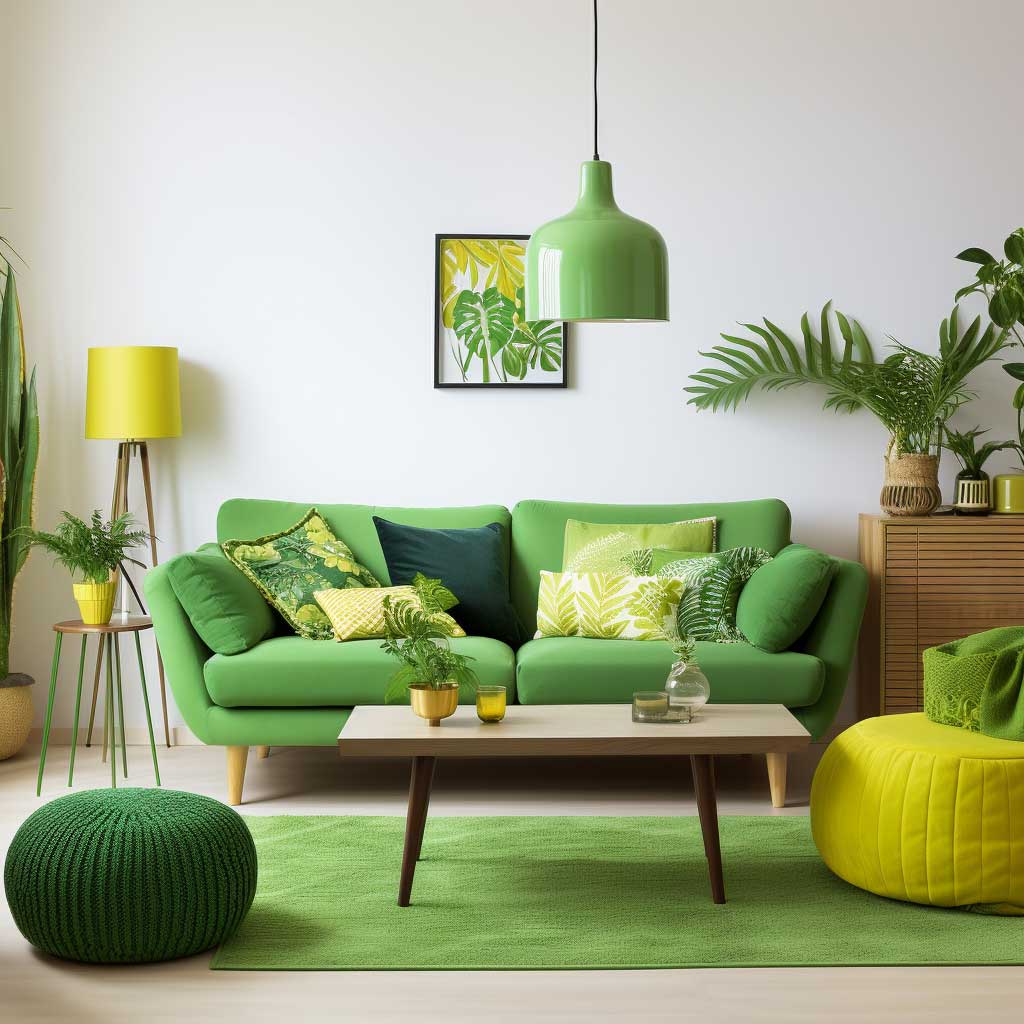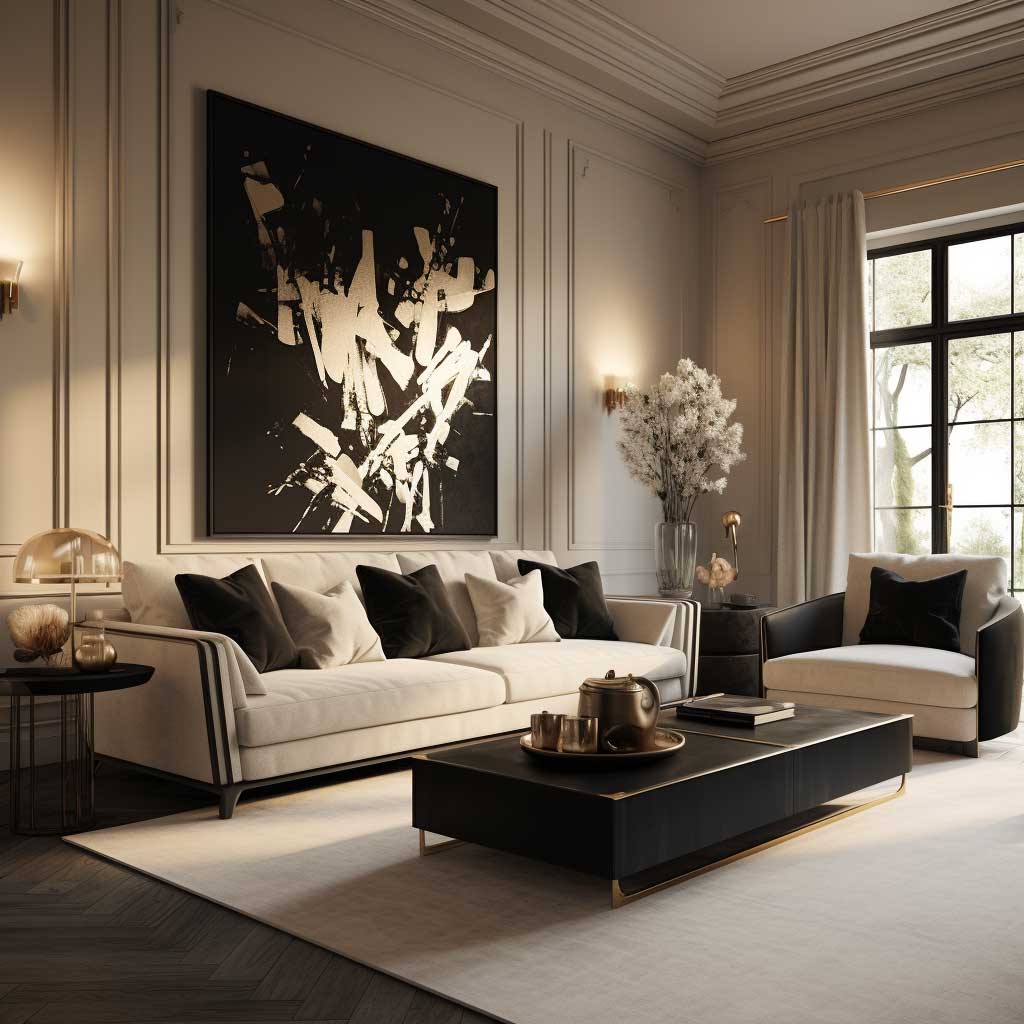The Japandi style is a harmonious blend of Japanese and Scandinavian aesthetics, creating a minimalist and functional design that brings warmth and tranquility to your living space. This style emphasizes natural materials, neutral color palettes, and clean lines. If you are looking to transform your living room into a Japandi style oasis, here are four inspiring ideas that will help you achieve the perfect balance between simplicity and comfort.
Neutral Tones in Japandi Style Living Room
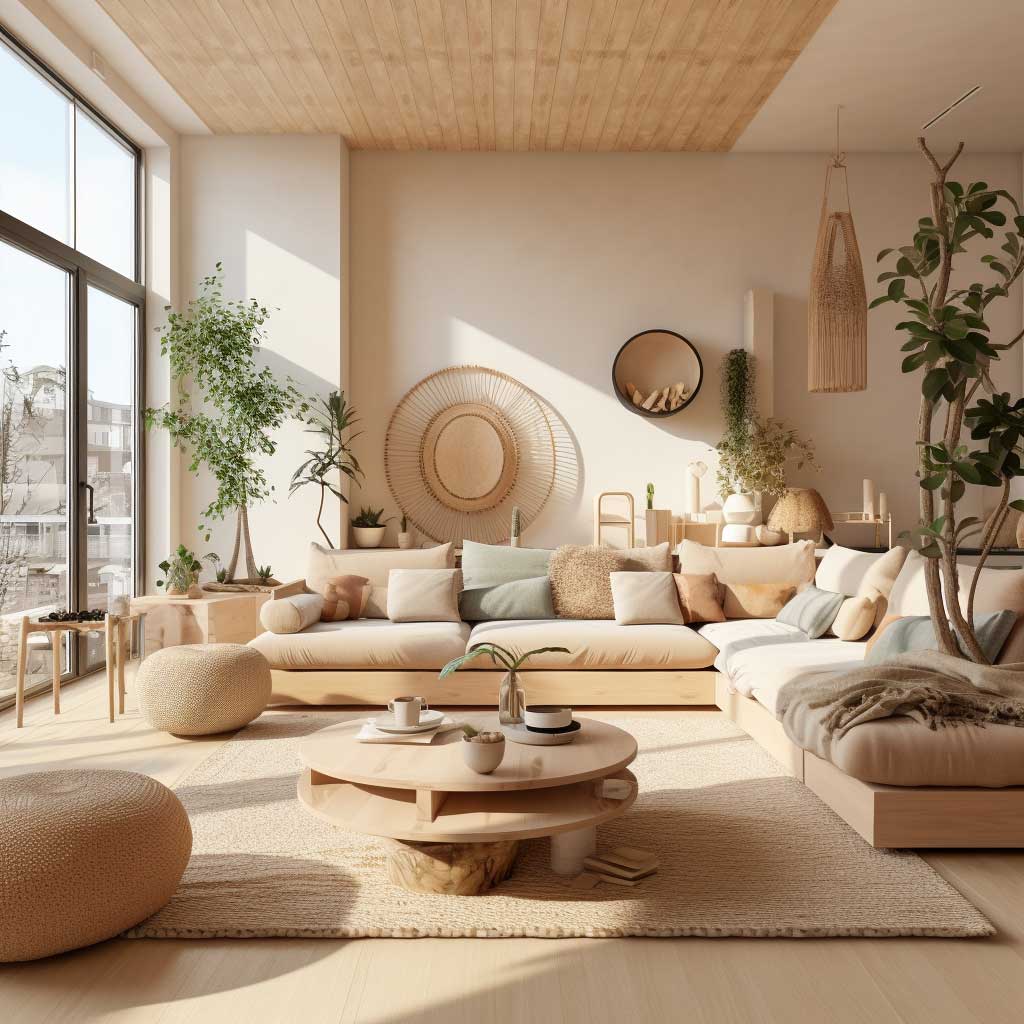
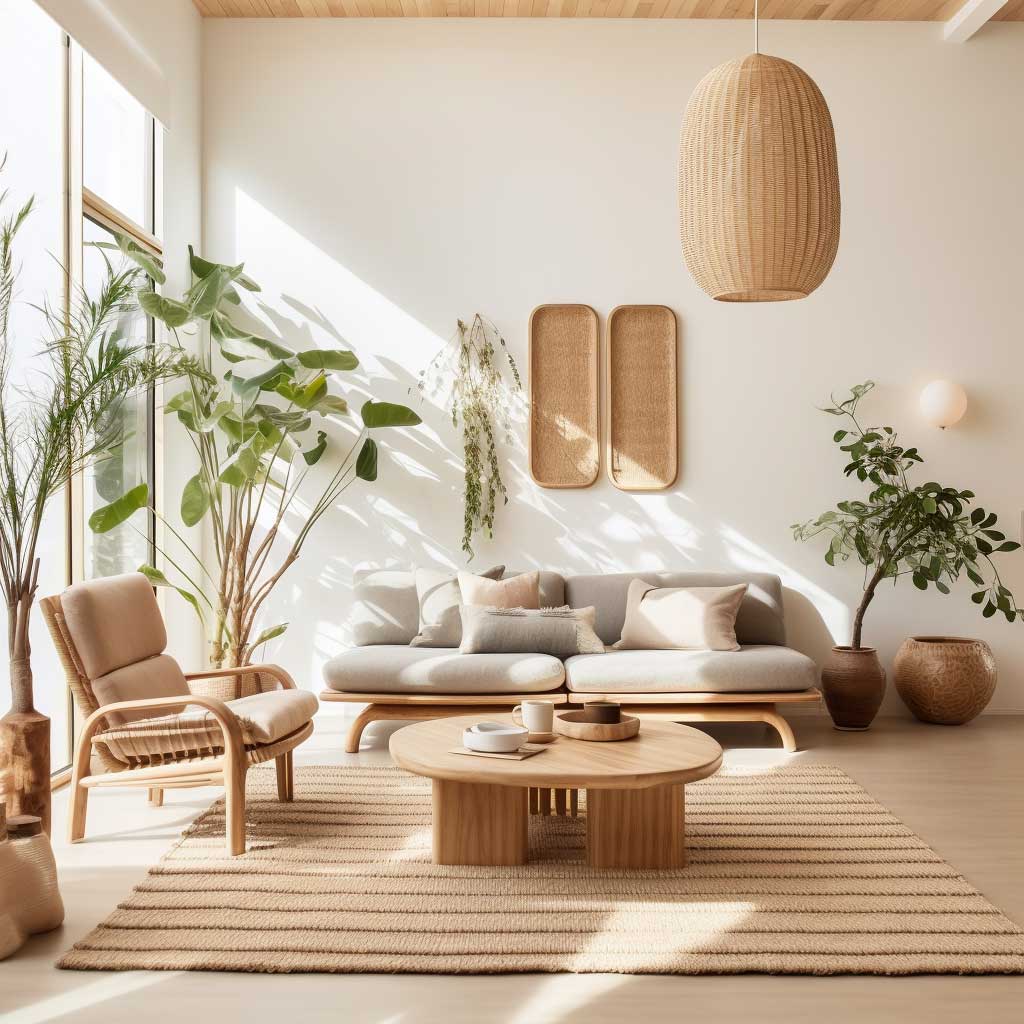
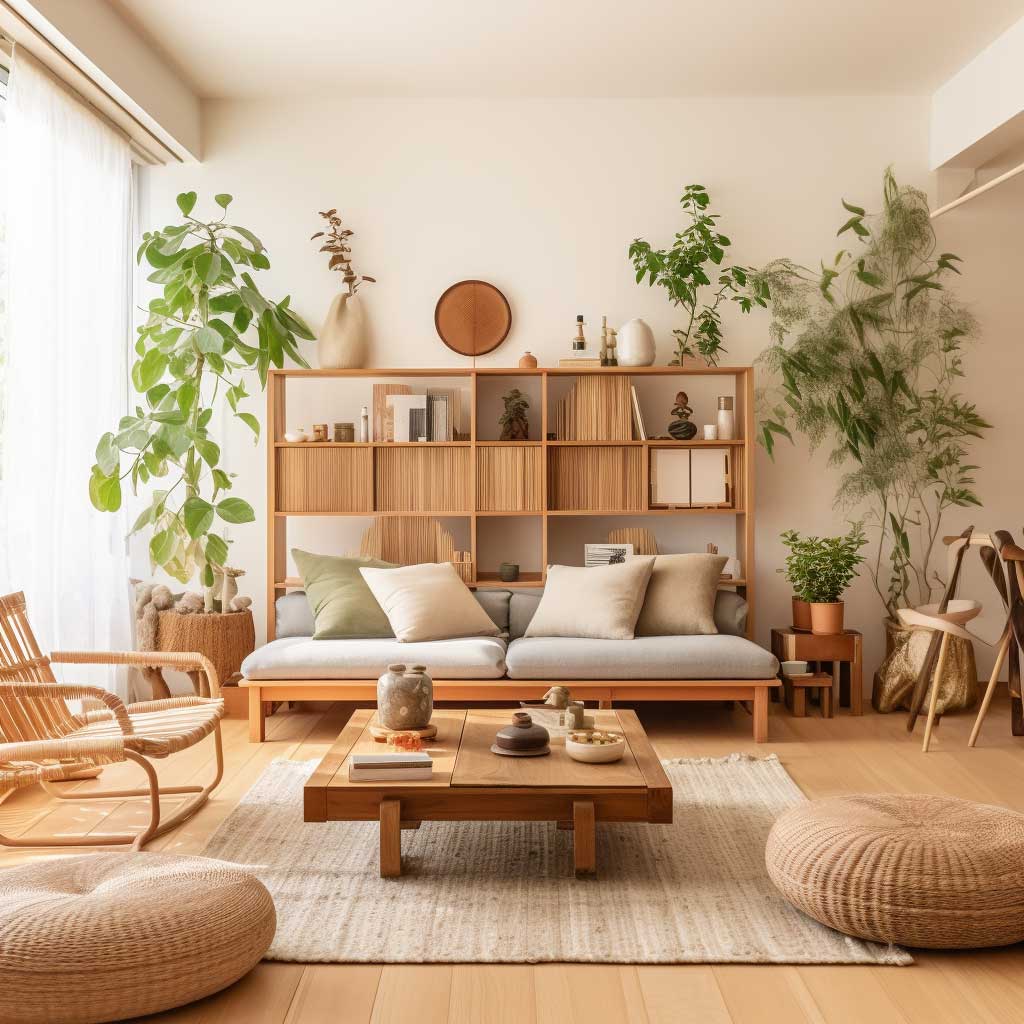

The Japandi style is a design trend that has been gaining popularity in recent years. It is a fusion of Japanese and Scandinavian design principles, which focus on simplicity, functionality, and the connection to nature. One of the key elements of a Japandi style living room is the use of neutral tones. Neutral tones, such as whites, greys, and beiges, are calming and soothing colors that create a serene and peaceful atmosphere in the living room.
The use of neutral tones in a Japandi style living room helps to create a harmonious and balanced space. These colors are often found in nature, and therefore, they help to bring a sense of the natural world into the living room. Additionally, neutral tones are versatile and can be easily combined with other colors and materials to create a cohesive and well-designed space.
In a Japandi style living room, the walls are often painted in a soft white or light grey color. This creates a clean and minimalist backdrop for the furniture and accessories. The furniture in a Japandi style living room is often made of natural materials, such as wood, and is designed with clean lines and simple forms. The use of wood in the furniture adds warmth and texture to the space, and complements the neutral tones of the walls.
The textiles used in a Japandi style living room are also in neutral tones. For example, the sofa and chairs may be upholstered in a light grey or beige fabric, and the curtains may be in a soft white or cream color. The use of neutral tones in the textiles adds a layer of softness and comfort to the living room.
Accessories in a Japandi style living room are kept to a minimum, and are carefully selected to add interest and personality to the space. For example, a few well-chosen pieces of artwork, a beautiful vase, or a decorative bowl can add a touch of elegance and sophistication to the living room. Again, the colors of the accessories are often in neutral tones, to create a cohesive and harmonious look.
Another important element of a Japandi style living room is the use of natural light. Large windows, or sliding glass doors, are often used to bring in as much natural light as possible. This helps to create a bright and airy space, and also helps to bring the outside in. The use of neutral tones in the living room helps to reflect the natural light, and create a light and spacious feel.
In summary, the use of neutral tones in a Japandi style living room creates a serene and peaceful atmosphere, and helps to create a harmonious and balanced space. The use of natural materials, such as wood, and the careful selection of furniture and accessories, adds warmth and texture to the space. Additionally, the use of natural light helps to create a bright and airy living room that is connected to the outside world.
Minimalist Furniture for Japandi Style Living Room




The Japandi style is a blend of Japanese and Scandinavian design philosophies that emphasize simplicity, functionality, and a connection to nature. One of the key elements of a Japandi style living room is the use of minimalist furniture. Minimalist furniture, with its clean lines and simple forms, complements the Japandi aesthetic perfectly and helps to create a calm and harmonious living space.
In a Japandi style living room, the furniture is carefully selected to serve a specific purpose and to add value to the space. There is no room for unnecessary or superfluous items. Each piece of furniture is chosen for its functionality and its aesthetic appeal. For example, a sofa with a simple design and clean lines may be chosen for its comfort and its ability to create a focal point in the living room. A coffee table with a minimalist design may be chosen for its functionality and its ability to complement the other furniture in the room.
The materials used in the furniture are also important in a Japandi style living room. Natural materials, such as wood, are often used because they add warmth and texture to the space and create a connection to the natural world. The wood used in the furniture is often in its natural state, or stained in a light or medium tone, to showcase its natural beauty.
The color palette of the furniture in a Japandi style living room is often neutral, with whites, greys, and beiges being the most common colors. These colors create a calm and soothing atmosphere and help to create a cohesive and harmonious look. However, pops of color may be added through accessories, such as cushions, artwork, or decorative objects, to add interest and personality to the space.
The layout of the furniture in a Japandi style living room is also important. The furniture is often arranged in a way that promotes a sense of openness and flow. There is often a clear path through the room, and the furniture is arranged in a way that encourages conversation and interaction. For example, the sofa and chairs may be arranged in a U-shape or an L-shape, with a coffee table in the center, to create a cozy and inviting seating area.
In summary, the use of minimalist furniture in a Japandi style living room helps to create a calm and harmonious space that is both functional and aesthetically pleasing. The use of natural materials, such as wood, and a neutral color palette, creates a connection to the natural world and adds warmth and texture to the space. Additionally, the careful arrangement of the furniture promotes a sense of openness and flow, and encourages conversation and interaction.
Natural Elements in Japandi Style Living Room

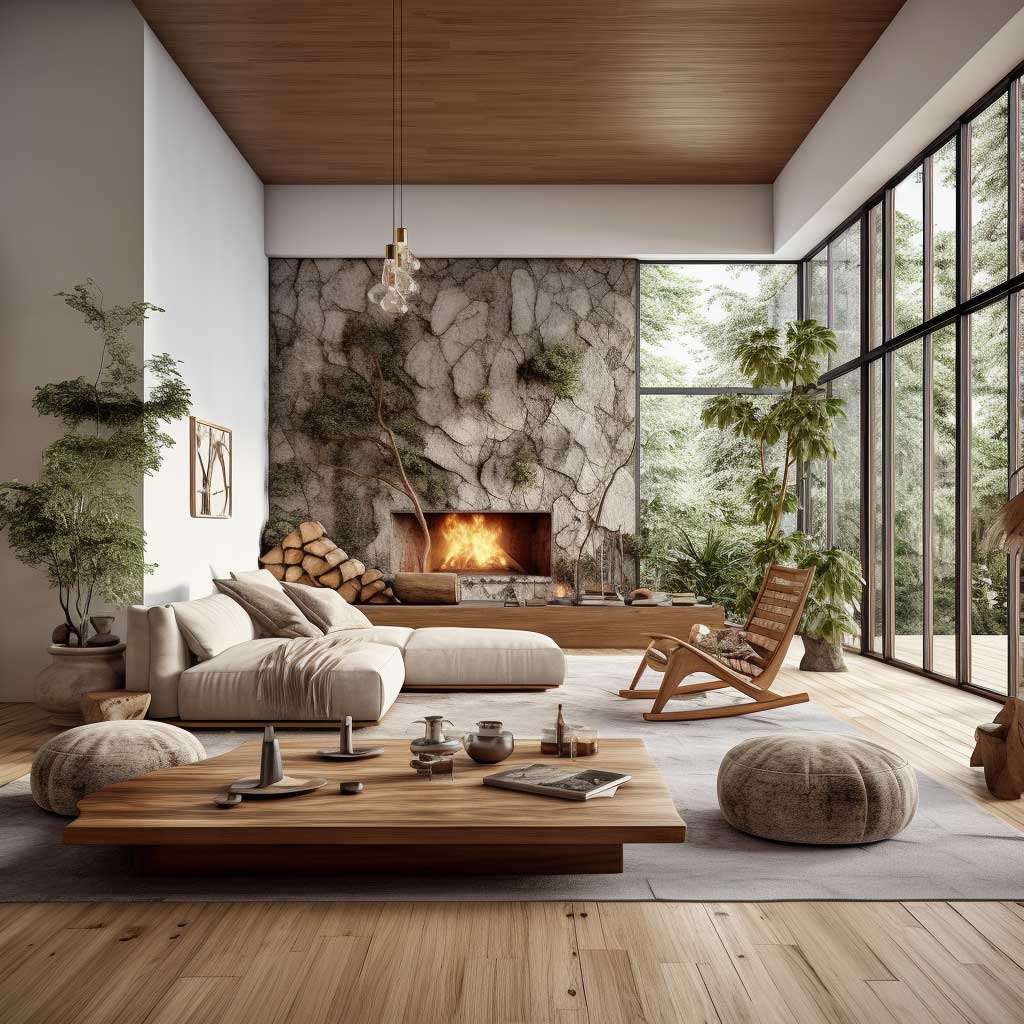


The Japandi style is a design trend that combines the minimalist and functional aspects of Scandinavian design with the elegance and sophistication of Japanese design. A key element of the Japandi style is the incorporation of natural elements into the living room. This includes the use of natural materials, such as wood and stone, as well as the incorporation of plants and other elements of nature.
In a Japandi style living room, wood is often the dominant material used in the furniture and accessories. Wood adds warmth and texture to the space and creates a connection to the natural world. The wood used in a Japandi style living room is often in its natural state, or stained in a light or medium tone, to showcase its natural beauty. Additionally, the grain of the wood is often visible, adding texture and interest to the space.
Stone is another natural material that is often used in a Japandi style living room. Stone may be used in the flooring, as a fireplace surround, or as a decorative element in the room. The stone used in a Japandi style living room is often in its natural state, with a matte finish, to create a connection to the natural world.
Plants are also an important element in a Japandi style living room. Plants add life and vibrancy to the space and create a connection to the natural world. In a Japandi style living room, plants are often displayed in simple pots or planters, and are placed throughout the room to create a sense of balance and harmony.
The color palette in a Japandi style living room is often neutral, with whites, greys, and beiges being the most common colors. These colors create a calm and soothing atmosphere and help to create a cohesive and harmonious look. However, pops of color may be added through accessories, such as cushions, artwork, or decorative objects, to add interest and personality to the space.
In summary, the incorporation of natural elements in a Japandi style living room creates a connection to the natural world and adds warmth and texture to the space. The use of natural materials, such as wood and stone, as well as the incorporation of plants, creates a sense of balance and harmony in the room. Additionally, the use of a neutral color palette creates a calm and soothing atmosphere that is characteristic of the Japandi style.
Functional Design of Japandi Style Living Room


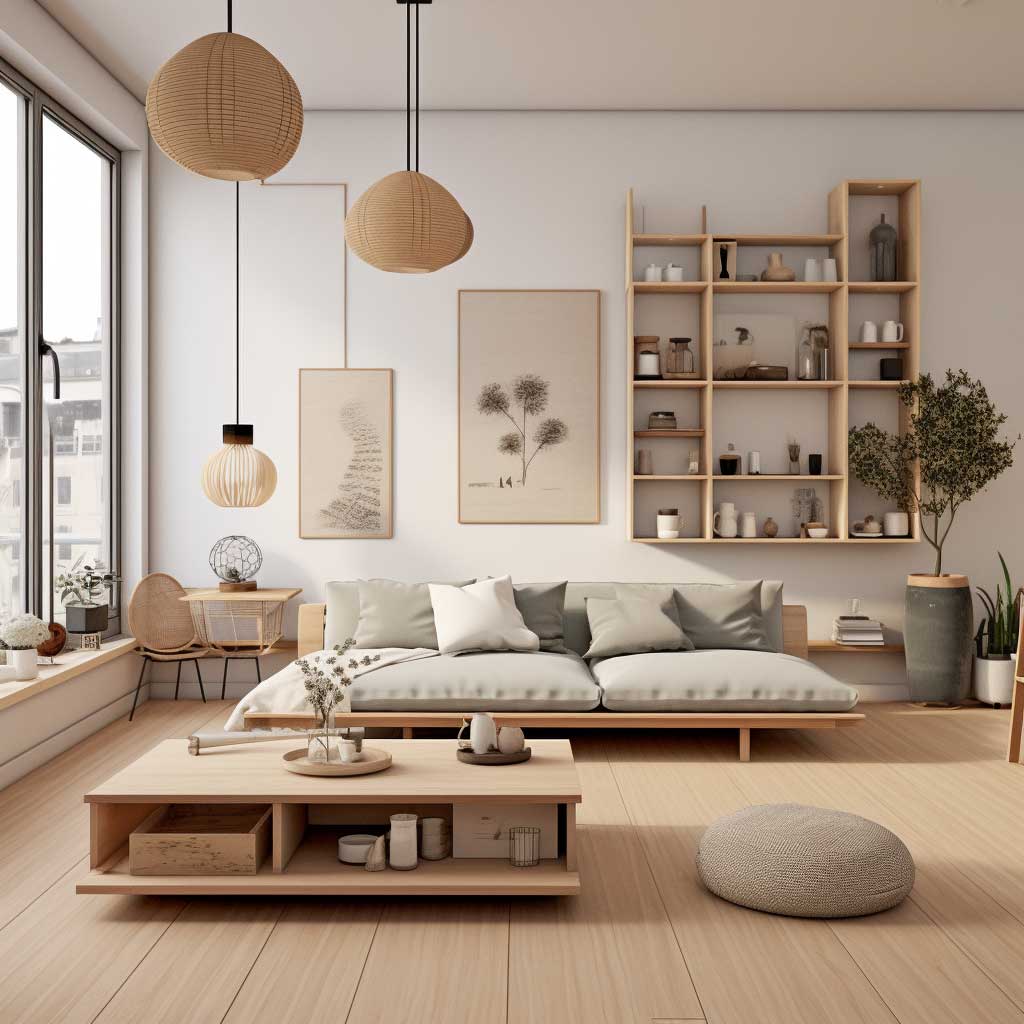

The Japandi style is a fusion of Japanese and Scandinavian design principles, which focus on simplicity, functionality, and a connection to nature. A key element of a Japandi style living room is the functional design of the space. This means that every piece of furniture and every accessory in the room serves a specific purpose and adds value to the space.
In a Japandi style living room, the furniture is carefully selected to serve a specific purpose and to add value to the space. There is no room for unnecessary or superfluous items. Each piece of furniture is chosen for its functionality and its aesthetic appeal. For example, a sofa with a simple design and clean lines may be chosen for its comfort and its ability to create a focal point in the living room. A coffee table with a minimalist design may be chosen for its functionality and its ability to complement the other furniture in the room.
The layout of the furniture in a Japandi style living room is also important. The furniture is often arranged in a way that promotes a sense of openness and flow. There is often a clear path through the room, and the furniture is arranged in a way that encourages conversation and interaction. For example, the sofa and chairs may be arranged in a U-shape or an L-shape, with a coffee table in the center, to create a cozy and inviting seating area.
Storage is another important aspect of the functional design of a Japandi style living room. Storage solutions are often integrated into the design of the space, and are carefully selected to complement the other furniture in the room. For example, a bookshelf with a minimalist design may be chosen for its functionality and its ability to complement the other furniture in the room. Additionally, storage solutions are often designed to be multifunctional, serving multiple purposes and maximizing the use of space.
The color palette in a Japandi style living room is often neutral, with whites, greys, and beiges being the most common colors. These colors create a calm and soothing atmosphere and help to create a cohesive and harmonious look. However, pops of color may be added through accessories, such as cushions, artwork, or decorative objects, to add interest and personality to the space.
In summary, the functional design of a Japandi style living room focuses on the careful selection of furniture and accessories that serve a specific purpose and add value to the space. The layout of the furniture promotes a sense of openness and flow, and storage solutions are integrated into the design of the space. Additionally, the use of a neutral color palette creates a calm and soothing atmosphere that is characteristic of the Japandi style.
Conclusion
The Japandi style living room is a perfect blend of the minimalist and functional aspects of Scandinavian design with the elegance and sophistication of Japanese design. It emphasizes the use of neutral tones, natural elements, minimalist furniture, and functional design to create a space that is calm, harmonious, and connected to the natural world. By carefully selecting furniture and accessories that serve a specific purpose, arranging the furniture in a way that promotes openness and flow, and incorporating natural elements such as wood, stone, and plants, you can create a Japandi style living room that is both beautiful and functional.





